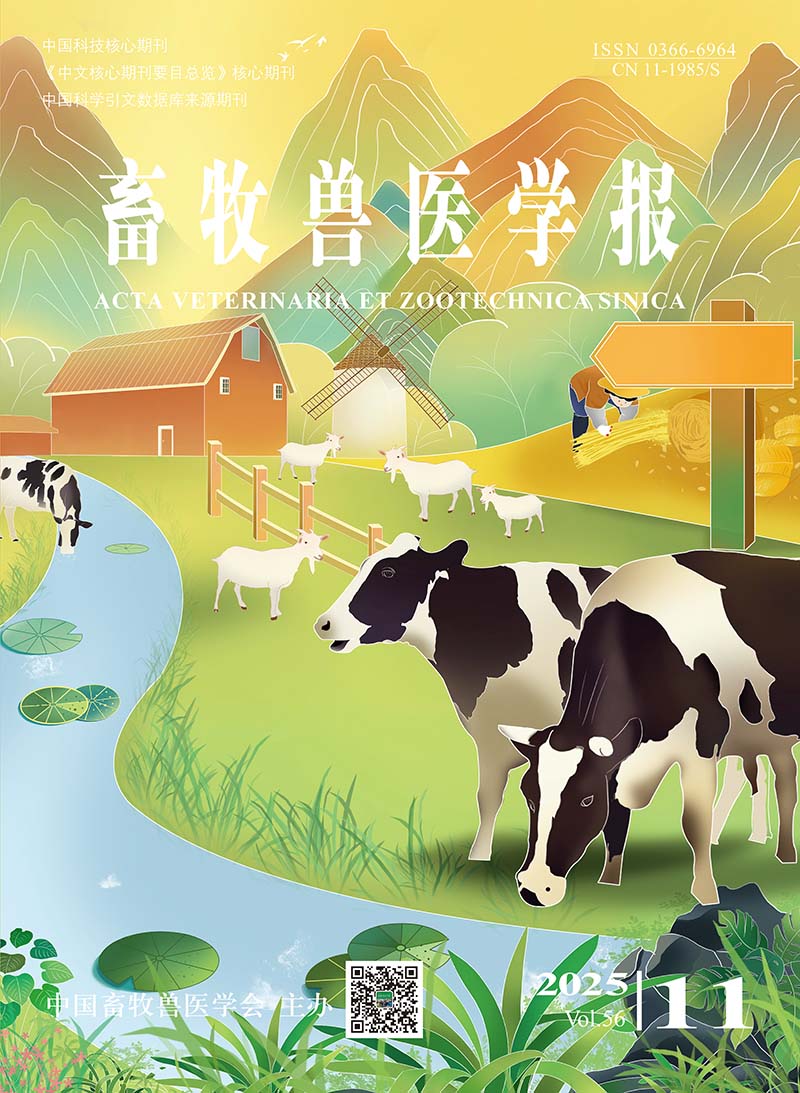-
The Rumen Degradation Characteristics of Whole Sugarcane for Dairy Cows and Its Application in Substituting Alfalfa, Oat Hay and Concentrate in Dairy Cows' Diets
- ZHENG Yuhui, DU Wen, HUANG Wenming, LI Shengli
-
2020, 51(11):
2743-2756.
doi:10.11843/j.issn.0366-6964.2020.11.013
-
 Abstract
(
369 )
Abstract
(
369 )
 HTML( )
HTML( )
 PDF (1259KB)
(
390
)
PDF (1259KB)
(
390
)
-
References |
Related Articles |
Metrics
The purpose of this experiment was to investigate the rumen degradation characteristics of whole sugarcane of dairy cows and its effects of using it replacing alfalfa, oat hay and concentrates in dairy cows' diet on the rumen fermentation, nutrient apparent digestibility, blood biochemical indexes and production performance of dairy cows, in order to open up new ways to replace the increasing prices feedstuff such as alfalfa, oat hay and concentrate in dairy cows' diets with whole sugarcane. In experiment one, the in-situ test, namely the rumen nylon bag test was used to investigate the rumen degradation characteristics of various nutrients of whole sugarcane, leymus chinensis and alfalfa. Experiment two was in vivo test,repeat 3 ⅹ 3 Latin square design was conducted and Holstein dairy cows with similar body weight, parities and milk yield and permanent rumen fistula were chosen to investigate the effect of using whole sugarcane replacing 25% or 50% of imported alfalfa from the Unites States in dairy cows' diet on nutrient digestibility, rumen fermentation characteristics and blood biochemical indexes of dairy cows. In experiment three, 60 Holstein dairy cows with similar parity, milk yield and milk in lactation were selected to perform production test, which aimed to explore the effects of using whole sugarcane replacing 30% alfalfa hay, 50% oat hay or 10% concentrate on the production performance, blood biochemical indexes of dairy cows and the economic benefits of dairy farms. The results showed that:1) The effective degradation rates of dry matter (DM) and acid detergent fiber (ADF) of whole sugarcane were significantly higher than leymus chinensis (P<0.05), and the effective degradation rates of neutral detergent fiber (NDF) and organic matter (OM) were significantly higher than leymus chinensis and alfalfa (P<0.05). 2) There was no significant effect on rumen pH, NH3-N (except 25% group at the 4 h time point) and volatile fatty acid (VFA) concentrations of dairy cows when using 25% and 50% whole sugarcane to replace imported alfalfa from the Unites States in the diet. There was also no significant effect on DMI and digestibility of DM, CP, OM and ADF, while the digestibility of NDF in the 50% group was significantly increased (P<0.05). In 50% group, the content of serum urea nitrogen in 2 and 8 h was significantly lower than 25% group and control group (P<0.05) and there was no significant difference in the blood content of β-hydroxybutyric acid, rumen VFA and total VFA in each group at different time points. 3) After using 50%, 30% and 10% of whole sugarcane to replace oat hay, alfalfa hay and concentrate, respectively, no significant difference was detected in blood glucose, urea nitrogen, β-hydroxybutyric acid, the esterification of fatty acid (NEFA), and milk yield. Besides, combined with milk yield and feed cost, the economic benefits of each cow in the substitution groups increased by 3.28, 7.48 and 1.62 yuan per day. respectively, compared with control group. It can be seen that the whole sugarcane is a kind of high-quality roughage that can be used by dairy cows with high digestibility, and using it to replace 25% or 50% of imported alfalfa from the Unites States in dairy cows' diet does not affect the rumen fermentation characteristics and rumen apparent digestibility of nutrients of dairy cows. And using whole sugarcane replacing 30% alfalfa hay, 50% oat hay or 10% concentrate will not affect the blood biochemical indicators and production performance of dairy cows, and will also increase the economic benefits of the dairy farm.






